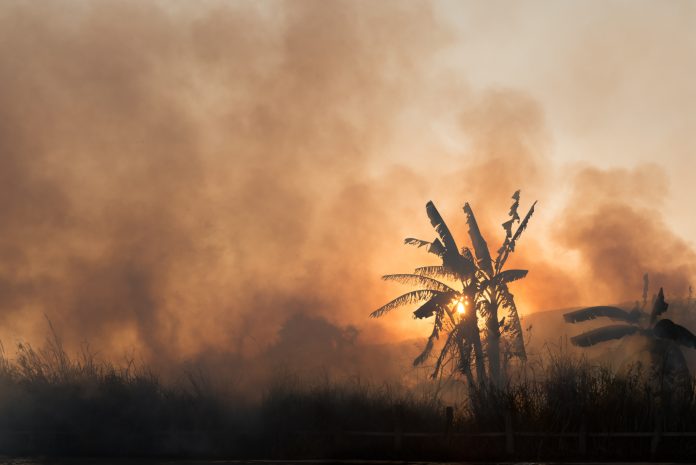Panama and other governments of tropical countries set out to understand how to inhibit deforestation and deliver reforestation tactics, following the COP26 conference
Supporting resolutions passed during the 2021 UN Climate Change Conference, COP26, the Panama government and other governments of tropical nations emphasised the importance of restoring tropical ecosystems and lessening deforestation, as shown in a new study led by the Smithsonian Tropical Research Institute (STRI).
Key to understanding what the environmental resolutions will mean, in terms of specific deforestation and reforestation actions in the tropics, researchers looked at how much carbon dioxide is released into the atmosphere when tropical forests are destroyed, and much carbon is stored as they recover.
However, deforestation rates are impacted by factors such as local economic development and global political and economic forces, making deforestation affects on carbon storage not as simply understood. Therefore, researchers adopted scenario planning for policy makers to visualise deforestation pathways.
Leveraging a Panama-wide carbon density map
The research group employed a Panama-wide carbon density map, produced using the airborne laser technology, LiDAR, by using a decade-long study of secondary forests with over 1 million tree measurements amongst local studies of often-neglected carbon pools in tree roots, soil, lianas, and coarse woody debris.
The researcher’s examination of about one-quarter of central Panama includes the area crucial for the operation of the Panama Canal and takes visual depictions of the landscape in 2030 and 2050 when considering potential deforestation scenarios.
They discovered that under current deforestation trends, or with less deforestation, central Panama could still store about 15% of the national carbon goals by 2050.
Should deforestation be entirely stopped in central Panama and the forest were left to naturally regenerate on the available land, the country could achieve up to 56% of its goal by 2050.
Contrasting this, at an accelerated deforestation rate, central Panama would lose up to half of its forests and around 25% of its carbon baseline by 2050.
The study allows an evaluation of individual deforestation events, for example, if Panama permits the clearing of up to 25,000 hectares of mature forest for mining in the Donoso and La Pintada districts of Colon and Coclé as has been reported in the press, emissions could amount to over 11 million metric tons of carbon dioxide, or the equivalent of over 40% of the potential carbon gains under the Recent Trends scenario by 2030.
Deforestation pathways and Panama’s carbon sequestration objectives
Following measurements of forest carbon storage in Panama, this new study reduces uncertainty in mathematical models by forecasting carbon dioxide release through deforestation scenarios, highlighting the possibility of a regenerated forest to take this greenhouse gas from the atmosphere.
The authors offer three deforestation scenarios based on recent deforestation trends, rates calculated in the decades prior to 2000, and more hopeful scenarios in which deforestation is halted entirely or even where forests regenerate on all available land.
Improving the accuracy of the predictions, researchers calculated deforestation rates and correlated the amount of forest lost with geographical features based on a set of maps of existing forest cover in Panama.
Jefferson Hall, lead author and STRI staff scientist, said: “Panama has been making strides to calculate both the carbon sequestration potential in its forests and emissions due to forest loss.
“Scenarios can help decision makers better anticipate the potential consequences of alternative sets of land-use decisions, which have a significant impact on Panama’s climate mitigation strategy.”
Reforestation tactics will require passive natural processes of forest succession
Allowing young secondary forests to regenerate will help the local species which are adapted to local conditions. These forests are also vital for water security, with the “sponge effect”, in which forest soils absorb water during the wet season and release it as stream flow during the dry months.
Hall added: “Our estimates of potential carbon storage demonstrate the important contribution of secondary forests to land-based carbon storage in central Panama.
“Protecting these forests will contribute significantly to meeting Panama’s climate change mitigation goals and enhancing water security.”











